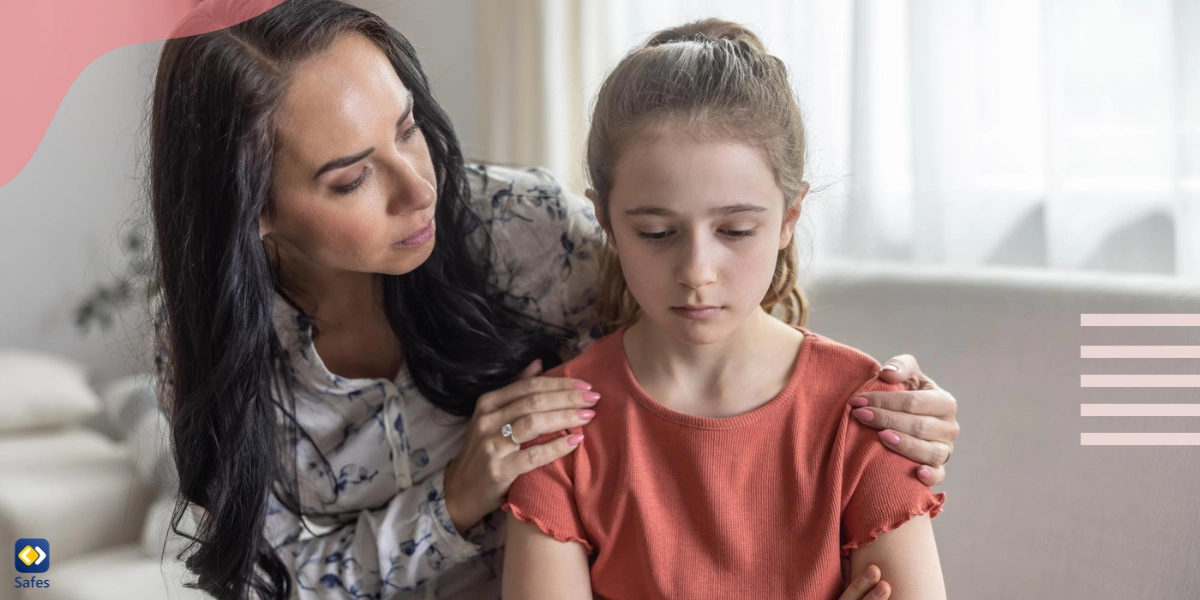Oppositional Defiant Disorder (ODD) is a behavioral condition typically diagnosed in adolescence. It presents a significant challenge for families and can lead to substantial distress if not correctly addressed. This guide will explore Oppositional Defiant Disorder in teens and adults, highlighting the key differences and their impact on individuals and their families.
Download and Start Your Free Trial of the Safes Parental Control App
What Is Oppositional Defiant Disorder (ODD)?
Oppositional Defiant Disorder, or ODD, is characterized by uncooperative, defiant, and hostile behavior toward authority figures. These behaviors often interfere with the individual’s daily activities, social interactions, and the overall quality of life.
It’s important to note that while defiance and oppositional behaviors are common in all teenagers as they navigate toward independence, ODD goes beyond what is considered typical adolescent behavior.
Understanding Oppositional Defiant Disorder in Adults and Teens
ODD is most commonly diagnosed in children and teenagers but can persist into adulthood. However, it can manifest differently between age groups.
In teenagers, ODD is often characterized by:
- Frequent temper tantrums
- Excessive arguing with adults
- Active defiance and refusal to comply with rules
- Deliberate attempts to annoy or upset others
- Blaming others for their mistakes
- Being easily annoyed themselves
These behaviors can lead to significant disruption in the home, school, or work environment and strain relationships with family members and peers.
Adults with ODD may exhibit similar symptoms but in a more sophisticated and subtle manner. They may:
- Have difficulty taking instructions from superiors
- Constantly question rules
- Resist authority
- Exhibit a persistent stubbornness
They may also harbor resentment and engage in deliberate acts to upset or provoke others. Still, their actions are often more calculated compared to the impulsive behavior seen in teenagers.

Prevalence and Impact of ODD
ODD affects approximately 1-16% of teenagers, with a higher prevalence among boys than girls. Despite its common occurrence, ODD is among the least researched and misunderstood behavioral disorders.
The impact of ODD extends far beyond the individual, affecting their families, peers, and communities. For the inflicted children, it’s usually accompanied by:
- Poor academic performance
- Increased risk of substance use
- Anxiety and mood disorders
For families, dealing with a child or teenager with ODD can be incredibly stressful and can strain family dynamics.
Potential Oppositional Defiant Disorder Causes
The exact cause of Oppositional Defiant Disorder is not known, but it’s believed to be a combination of:
- Biological factors: Neurobiological differences (such as an imbalance in certain chemicals in the brain that regulate mood) and a potential link to attention deficit hyperactivity disorder (ADHD).
- Genetic factors: Family history of ODD or other behavioral disorders.
- Environmental factors: Exposure to a dysfunctional or inconsistent home environment, neglect, abuse, or lack of parental supervision.
- Psychological factors: Inherent temperament and ability to handle frustration and cope with stress.
Identifying ODD: Signs and Symptoms
Identifying ODD can be challenging due to the overlap of its symptoms with typical adolescent behavior and other behavioral disorders. However, the critical differentiator in ODD is the frequency, intensity, and duration of these behaviors.
Common signs of ODD in both teenagers and adults include:
- Frequent temper tantrums or episodes of anger
- Excessive arguing with adults or authority figures
- Active defiance and refusal to comply with rules
- Deliberate attempts to annoy or upset others
- Blaming others for their mistakes or misbehavior
- Being easily annoyed or harboring resentment
- Vindictiveness or seeking revenge
Diagnosing ODD: Professional Assessment
A diagnosis of ODD is typically made by a mental health professional or clinician based on a comprehensive evaluation. The process includes a detailed interview with the parents or caregivers, observation of the teenager’s behavior, and possibly psychological testing.
The criteria used for diagnosing ODD include the presence of at least four symptoms from the following categories:
- Angry/Irritable mood
- Argumentative/Defiant behavior
- Vindictiveness
These symptoms must be present for at least six months and occur more frequently than is typical for the individual’s age and developmental level.

Treatment Options for ODD
ODD is treatable, and early intervention can have noticeable outcomes. Treatment includes a combination of:
- Therapy: Therapy plays a central role in managing ODD. Cognitive-behavioral therapy (CBT) can help your teen develop problem-solving skills, learn to control their anger and impulsivity, and improve their social interactions.
- Counseling: Family therapy helps improve communication skills, enhance family interactions, and provide you with practical strategies to manage your child’s behavior.
- Medication: Medication is usually not the first line of treatment for ODD but may be used with therapy. Doctors may prescribe Antipsychotic medications, stimulants, or antidepressants.
Managing and Coping with ODD
Managing ODD involves a multifaceted approach that includes the individual, their family, and often, their school or work environment. Here are some practical tips:
- Consistent boundaries: Ensure rules and consequences are clear and consistent.
- Positive reinforcement: Acknowledge and reward good behavior.
- Develop coping strategies: Learn techniques to manage frustration and anger.
- Seek support: Don’t hesitate to seek help from professionals or support groups.
ODD can greatly impact a teen’s relationships with family, friends, and colleagues. You should maintain open communication and build a supportive environment as a parent or caregiver. Remember, it’s the behaviors associated with ODD that are problematic, not your child.
Preventing ODD: Proactive Measures
Early intervention can help reduce the risk and severity of ODD. Programs that teach social skills, deal with anger management, and promote positive parent-child interactions are among the best intervention methods.
Safes Parental Control App and ODD
Parenting a child or teenager with ODD can be challenging. Still, tools like the Safes parental control app can provide additional support. Safes can help you monitor your child’s online activities, set appropriate boundaries, and foster a safer digital environment.
The Safes app offers premium features to protect your child both online and offline. Feel free to download it from our website or Google Play and AppStore. Also, read the links listed below. They can help you learn how to set parental controls on all major platforms:
- Windows parental controls
- MacBook parental controls
- Parental controls on Android
- iPhone parental controls
Sign up for a 14-day free trial today to experience full parental control capabilities without needing a credit card.
Conclusion: Oppositional Defiant Disorder in Teens
Oppositional Defiant Disorder can be a challenging condition for teens and their families. However, they can lead successful and fulfilling lives with appropriate intervention, management strategies, and support.
If you suspect your child may have ODD, seek professional help immediately. Early intervention often prevents future problems and provides the tools and strategies for managing ODD.
Your Child’s Online Safety Starts Here
Every parent today needs a solution to manage screen time and keep their child safe online.
Without the right tools, digital risks and excessive screen time can impact children's well-being. Safes helps parents set healthy boundaries, monitor activity, and protect kids from online dangers—all with an easy-to-use app.
Take control of your child’s digital world. Learn more about Safes or download the app to start your free trial today!




